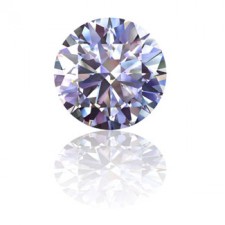When it comes to buying loose diamonds for your next jewelry project, you should certainly do a little research before picking the biggest one out of the bunch! Your jeweler will always point you in the right direction, but why not come to the business transaction prepared and full of information? Just like any other time you would spend a large sum of money, you definitely want and need to know everything you can about the entire process.  Diamond Buying Guide The very first thing you will probably be curious about is the difference between naturally made stones and synthetic, lab created stones. You may be surprised as to what you will find when you open up your internet browser and get down to business. Synthetic gems are created in a lab while natural gems are created by the earth. This may be common knowledge. Synthetic gems were initially created in the late 1800s and were originally created for uses other than jewelry! Other commercial industries found they needed these gems, but wanted to figure out a way to manufacture them so they did not have to rely on finding them in the earth somewhere underground. Laser technology, communications and abrasions are some industries where these synthetic crystals can be of good use. However, if you are selling these lab crated stones, you must be perfectly clear they are not naturally made stones. Loose diamonds have a synthetic counterpart and it is called the cubic zirconia. You may have heard this term before and think of a CZ as a “fake diamond.” You would be correct in saying that, but they should not have a negative connotation at all. Certified loose diamonds are all natural diamonds, but the CZ is a less expensive counterpart where no one could ever tell the difference just by looking at it with their eyes. CZ’s are perfectly flawless since they are created in a lab, while most loose diamonds you will encounter will certainly have some flaws. Since real diamonds are made naturally, this makes perfect sense that they would have gotten beat up a little bit along the way. The method in which the earth produces diamonds is a long and intense process that is certainly one of the world's wonders. CZ’s are more dense, less hard (on the Mohs hardness scale, CZ is 8 while a real loose diamond is 10) and CZ’s can have smooth or rounded facets cut into them.
Diamond Buying Guide The very first thing you will probably be curious about is the difference between naturally made stones and synthetic, lab created stones. You may be surprised as to what you will find when you open up your internet browser and get down to business. Synthetic gems are created in a lab while natural gems are created by the earth. This may be common knowledge. Synthetic gems were initially created in the late 1800s and were originally created for uses other than jewelry! Other commercial industries found they needed these gems, but wanted to figure out a way to manufacture them so they did not have to rely on finding them in the earth somewhere underground. Laser technology, communications and abrasions are some industries where these synthetic crystals can be of good use. However, if you are selling these lab crated stones, you must be perfectly clear they are not naturally made stones. Loose diamonds have a synthetic counterpart and it is called the cubic zirconia. You may have heard this term before and think of a CZ as a “fake diamond.” You would be correct in saying that, but they should not have a negative connotation at all. Certified loose diamonds are all natural diamonds, but the CZ is a less expensive counterpart where no one could ever tell the difference just by looking at it with their eyes. CZ’s are perfectly flawless since they are created in a lab, while most loose diamonds you will encounter will certainly have some flaws. Since real diamonds are made naturally, this makes perfect sense that they would have gotten beat up a little bit along the way. The method in which the earth produces diamonds is a long and intense process that is certainly one of the world's wonders. CZ’s are more dense, less hard (on the Mohs hardness scale, CZ is 8 while a real loose diamond is 10) and CZ’s can have smooth or rounded facets cut into them.
Loose Diamonds Vs. Synthetic Gemstones: Can You Tell The Difference?
By: Amidon Jewelers
